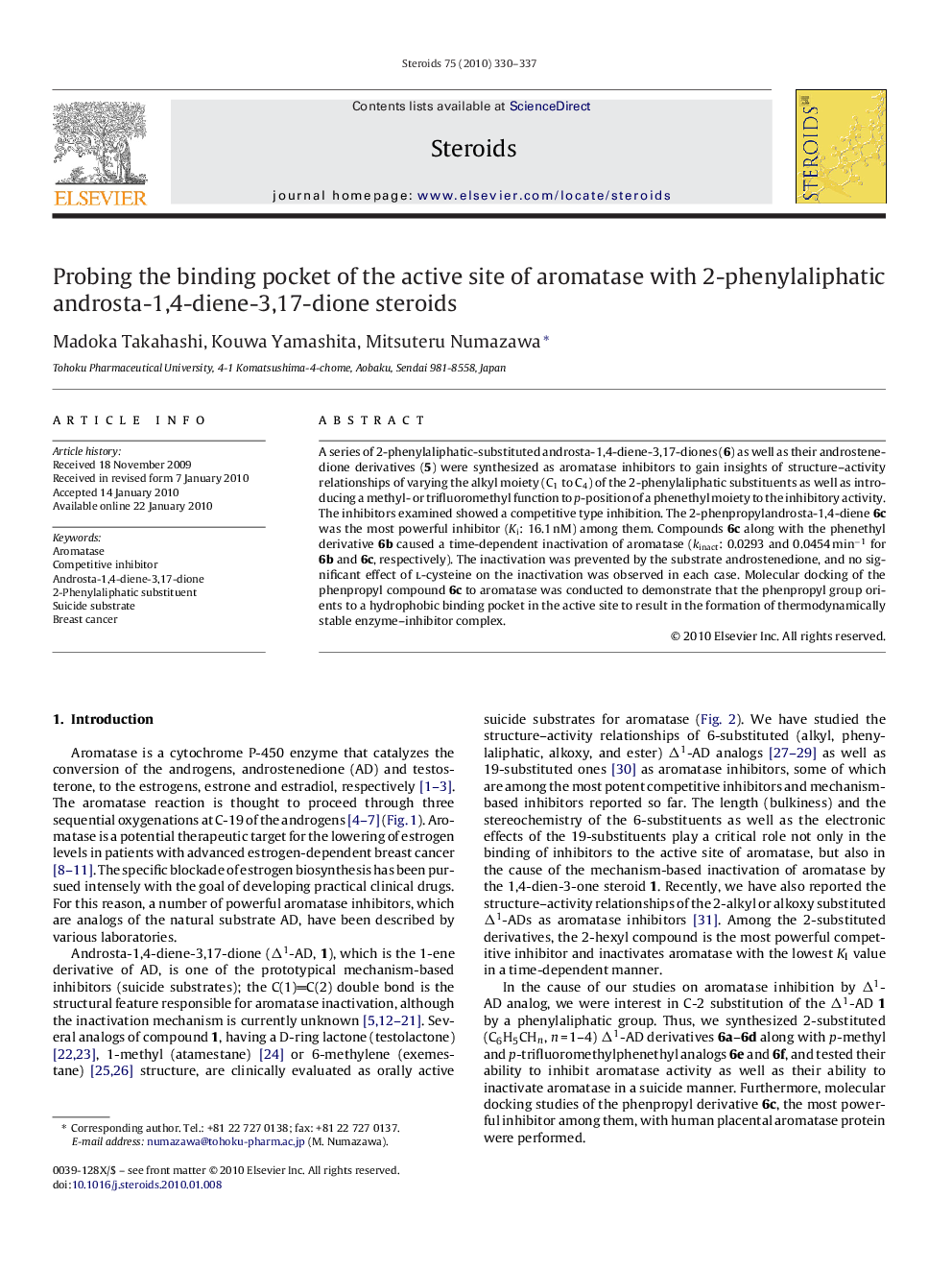| Article ID | Journal | Published Year | Pages | File Type |
|---|---|---|---|---|
| 2028254 | Steroids | 2010 | 8 Pages |
A series of 2-phenylaliphatic-substituted androsta-1,4-diene-3,17-diones (6) as well as their androstenedione derivatives (5) were synthesized as aromatase inhibitors to gain insights of structure–activity relationships of varying the alkyl moiety (C1 to C4) of the 2-phenylaliphatic substituents as well as introducing a methyl- or trifluoromethyl function to p-position of a phenethyl moiety to the inhibitory activity. The inhibitors examined showed a competitive type inhibition. The 2-phenpropylandrosta-1,4-diene 6c was the most powerful inhibitor (Ki: 16.1 nM) among them. Compounds 6c along with the phenethyl derivative 6b caused a time-dependent inactivation of aromatase (kinact: 0.0293 and 0.0454 min−1 for 6b and 6c, respectively). The inactivation was prevented by the substrate androstenedione, and no significant effect of l-cysteine on the inactivation was observed in each case. Molecular docking of the phenpropyl compound 6c to aromatase was conducted to demonstrate that the phenpropyl group orients to a hydrophobic binding pocket in the active site to result in the formation of thermodynamically stable enzyme–inhibitor complex.
